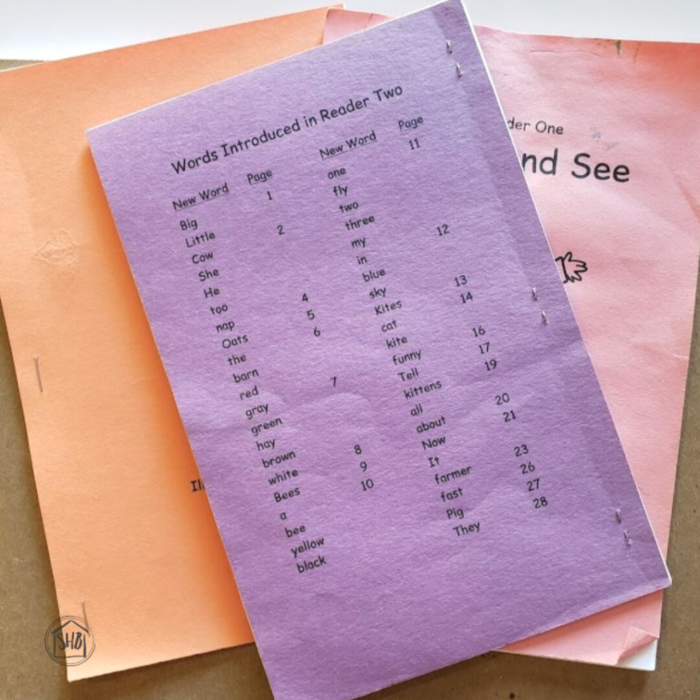
I am convinced some of the objections parents and teachers have with unpopular programs is one thing: TIME! The time it takes to prepare, to teach, to review – to check all the boxes, can be overwhelming. When the fact that other things have to be done in the day (like other learning, chores, eating, sleeping, etc.) is added in, the overwhelm increases. We cannot spend hours of our time (nor our children’s time) in one subject. It just doesn’t work.
In the past 4 years of homeschooling, I have come to understand some of the choices I have made for curricula are unpopular. We have chosen a math curriculum considered anathema in some homeschooling circles. No matter. We are not swayed by popular opinion. We are committed to use what works for us.
One of the programs, which is also unpopular, is Primary Arts of Language from the Institute for Excellence in Writing. We have had immense success from it with two students and I LOVE it.
Admittedly, the time involved in preparing to teach Primary Arts of Language is immense. Before they even begin to teach it, parent-teachers start to question “Is all this work worth it?” Thus, programs such as Primary Arts of Language (PAL) get the label: “too much” and are abandoned for “easier” curricula.
This post may include affiliate links. If you click and make a purchase based on my recommendation, I get a small remuneration at no extra expense to you. I only recommend things I use and believe to be a blessing.
I was talking with one of my friends the other day who started out with PAL and abandoned it for another curriculum. She said it took her hours a day to just do PAL and her kids weren’t interested in it. She was incredulous when I told her we did it in about 10-15 minutes of instruction a day for reading.
Yep. 10-15 minutes!
So, I want to offer you our laid-back approach to teaching PAL. I hope it will be a blessing to the parent-teacher who sees the benefit and beauty of PAL but is languishing in the list of boxes unchecked each day. First let’s examine the benefit and beauty of PAL. And then we can get down to the nitty-gritty simplification stuff.
Why PAL Works (not just for us)
PAL works because 1. it is engaging, 2. it is phonics-based, and 3. it gives students a sense of success on a daily basis.
The Reading portion of PAL is the starting point for all PAL students and teachers. All other portions of the program are added later. The Reading portion is anchored by fun poems the kids can learn to read (and memorize) by focusing on a couple of phonemes per day. The rest of the program is review and reinforcement. The poems selected are simple but truly special – the kids just love them. Rhyme structure helps them to know sounds to expect when reading aloud and rhythm helps reinforce good read-aloud skills. Then, at the end of the instruction time, students have the opportunity to play games. These are such a hit around our house that my son asks, “Mama, can we play my games?”
Phonics-based programs are absolutely the way to go when it comes to learning how to read. Experts out there can debate it all they like, but the outcome of a phonics-based instruction method speaks for itself and have results that last a lifetime. In our own home, I have witnessed my students who have strong phonics instructions go on to be strong sight readers and strong spellers. In my estimation phonics-based programs teach “how to read” where sight-word programs teach “how to decipher.” These are vastly different skills.
PAL also works because it builds reading confidence in students from Day One. Students can begin to “read” words in that very first day using some of the most basic phonemes. PAL creative “helper” names (such as Squeally-e’s” and the “ow! Cow” kids love to point out when they see them. Kids are jazzed when they see these “helpers” in the most unexpected places. My son will see them on billboards and excitedly point them out to me. PAL also has memorable “stories” for each letter to help students learn their sounds.
A Simplified Schedule
The goal of reading instruction in the early years is simple: Get kid to read. And PAL is a proven program to meet that goal. But, I don’t follow their schedule to a T. I have simplified it, making it easier for me and the student.
Here’s my simple schedule:
- Poem – teacher directed
- Instruction (new phonemes) – teacher directed
- Games – student directed (with partner)
- Work – student directed
- Practice – student directed, teacher assisted
If you are looking at the PAL: Reading Teacher Guide, you will notice I have cut many things from the day. We don’t read a story every single day – at least not here. The journal is featured somewhere else in our days (and sometimes is neglected altogether). We do not start our students out with the PAL: Writing instruction at the same time we start PAL: Reading; so that is excised too.
You will also notice my schedule is largely student directed. We practice a rotation schedule for our school days. So the PAL student is rotated in for instruction and rotated out for all other aspects of the program. An older sibling helps the PAL student with games and work.
Teacher Preparation
One of the elements of PAL that makes it special are the “homemade” games the kids play to reinforce the daily instruction. It is also what makes it tedious in preparation. It takes literal hours to prepare all of the games in the PAL program!
I contend the time it takes to prepare all the games is well worth it – even if you are only teaching one student to read. The games are fun, engaging activities students absolutely LOVE! Even more, they are effective.
My tip for making the games is to create all of them before beginning to teach PAL. This cuts down on your prep time during the school year and gives you the opportunity to dig into the scope and sequence of the program. It took me a number of hours to create these games a couple of years ago and we are still using them.
Here are my tips for creating the games:
- Invest in and use file folders to create the games. They are durable and easy to store.
- Glue the elements of the game board to the inside of the file folder. Cut out the game pieces.
- Use colorful envelopes to hold the pieces. Label the outside of the envelope with the name and number of the game it is associated with. There will be some extra pieces because some games introduce pieces slowly. Have an extra envelope for these pieces.
- Paperclip the envelope, with pieces inside, to the top of the file folder to keep all the elements of the game together.
- Label each folder with the name and number of the game.
- Store the games in number order in a magazine file (you will need two to hold all the games for PAL)
Weekly/Monthly Prep
The biggest hurdle (game prep) crossed, the weekly and monthly prep to teach PAL is minimal. I created a Teacher folder for PAL and slide freshly printed resources into it in units. For me, each poem is a unit. I print all the resources for those lesson numbers and put them in my teacher folder.
The student has a clipboard for reading practice. Each day I add the new reading practice sheet to the top of the clipboard. He goes off to do his games and work, and comes back to me to read from his clipboard when he is ready.
I also printed and bound the readers provided in the PAL Teacher Guide. These are used throughout the program, as the student is ready. I made them a bit stronger by using construction paper to create the front and back covers (here are my best Homeschool Printing Tips – you’re welcome). We have been using these with two students and they are looking a bit beat up, but the inside pages are in tact.

Teacher Instruction
Sliding the poems into page protectors is my biggest tip for teaching PAL. Simple, I know (check the title of this blog). But I have had immense success in paring instruction down to: a clipboard, a page-protected poem, a Vis-a-Vis marker, and a child on my lap.
Our instruction time consists of reading the poem once or twice and then pointing out the phonemes and “helpers” highlighted in each lesson. I simply write on the page-protected poem, underlining the phonemes or noting pronunciation markers. I add a little bit to the instruction by writing down two or three extra words that use those phonemes and reading them with the student. This takes 10 minutes.
After we are finished with instruction, I will introduce any new games, hand out work for the day, attach the newest reading practice sheet to the clipboard and send my student off to play and work.
When he is ready, having played and completed his work, he comes back over to read to me. This takes about 5 minutes.
That’s it! It is so simple and so rich that I struggle to understand why anyone would complicate it more.
Results
Every kid is different, but we have worked through the entire PAL program with one student and are currently “working” through it with a second student. Our results are spectacular!
Student A was a late-birthday Kindergartner (birthday in October) when we started PAL in September. She was what I would call an independent reader by November. In January, we bumped her up to 1st grade and started All About Spelling instruction in February. By March, she was a voracious, completely independent reader.
Student B is a late-birthday Pre-K (birthday in late November). We have started PAL with him and done it incredibly sporadically. We are currently stalled out at lesson 14. No matter – he has already begun to read anything he can get his hands on. He has taken the basics taught in the first 10 lessons and extrapolated them to pretty much any word he comes across in Curious George and his favorite: the McGuffey Primer.
Again, results will vary with each student, as our own microcosm of readers attests. But I want to give you encouragement – this program works! It creates successful, independent, enthusiastic readers.

Primary Arts of Language: Reading-Writing Complete Package ($149.00)













